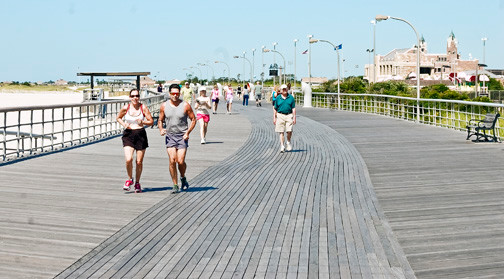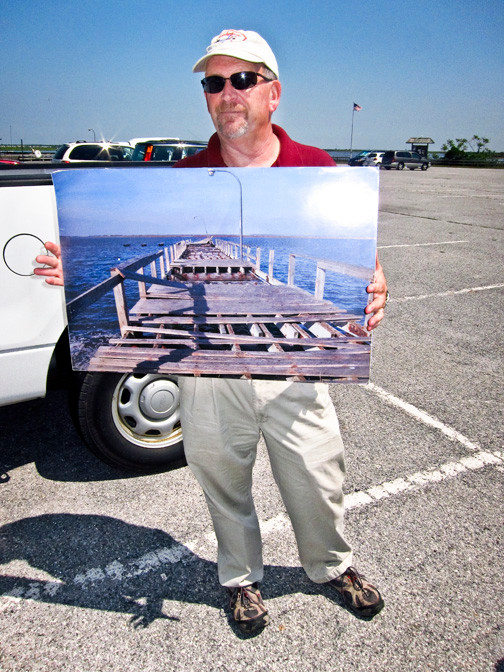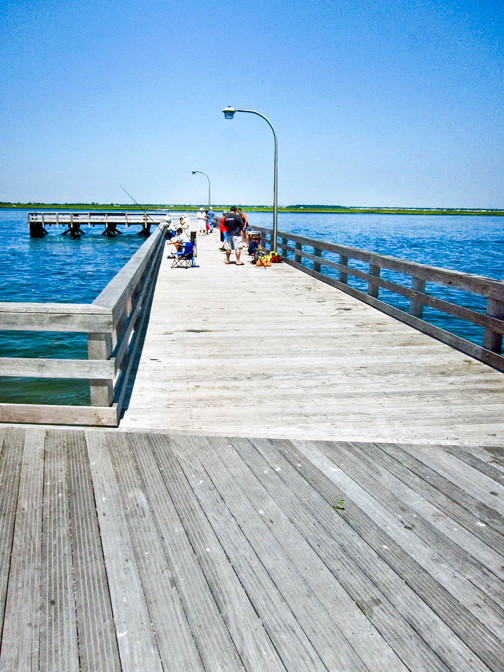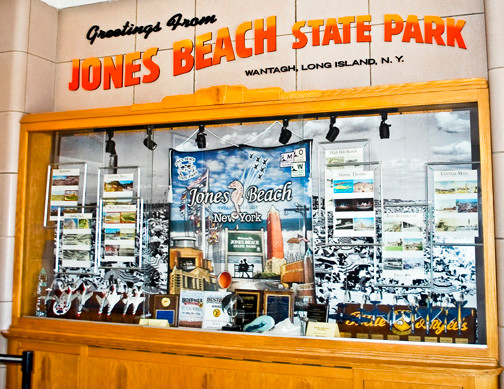Video: A crown jewel shines brighter
Millions of federal and state dollars spur Jones Beach’s post-Sandy revival
Nearly two years after Hurricane Sandy, the Jones Beach State Park staff — with the help of the Federal Emergency Management Agency — has not only repaired, but revived the world-famous attraction.
One of the park’s hardest-hit areas was the Central Mall, the hub of the Jones Beach boardwalk, where beachgoers are drawn to a variety of concessions and activities. FEMA provided over $2.4 million to fix the 2-mile-long boardwalk after it sustained severe tidal damage.
“The whole boardwalk was compromised,” said Hank Leggio, director of park operations. “Railings were bent and undulating.”
The Central Mall’s boardwalk handrails are now made of sturdier Brazilian ipe (pronounced e-pay) wood. “I can’t even imagine they were able to put all this back together,” said Bob Manning, 56, who was sipping a drink under the signal flags on the boardwalk. “If this is all new, it’s amazing. They did a beautiful job.”
After the storm, the staff renovated heavily damaged lifeguard shacks and the flooded administration building, and cleared massive amounts of debris and sand that washed up onto parking lots.
“We were in shock, so we were sizing up the situation,” Leggio said. “… We took a little bit of time to think about where to start. I want to give a lot of credit to my staff, many of whom came to work immediately even though they had problems in their own homes.”
The staff made it a priority to preserve the park’s heritage amid major renovations. “It’s a balance,” Leggio said. “We were very concerned about keeping things as close to original as we could.” Jones Beach’s storm resiliency initiative has strengthened the park to make it more prepared for future storms.
Sandy had uprooted a lifeguard shack that had sat on the West Bathhouse beach since the 1930s. Fortunately, it was salvaged.
East of Field Six, meanwhile, there are new fences, which capture sand to replace dunes that act as a tidal buffer but were washed away by Sandy. “Views that we didn’t have before were there now because of the dunes that were flattened,” Leggio said.

 39.0°,
Fair
39.0°,
Fair 











